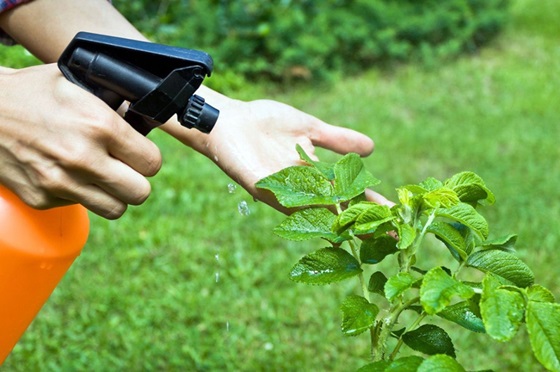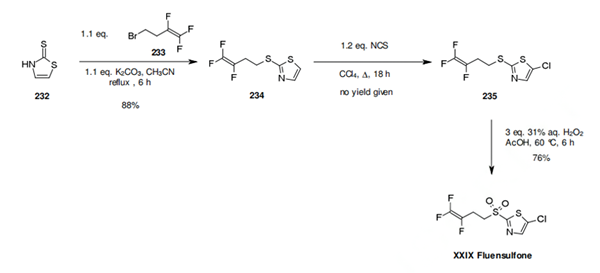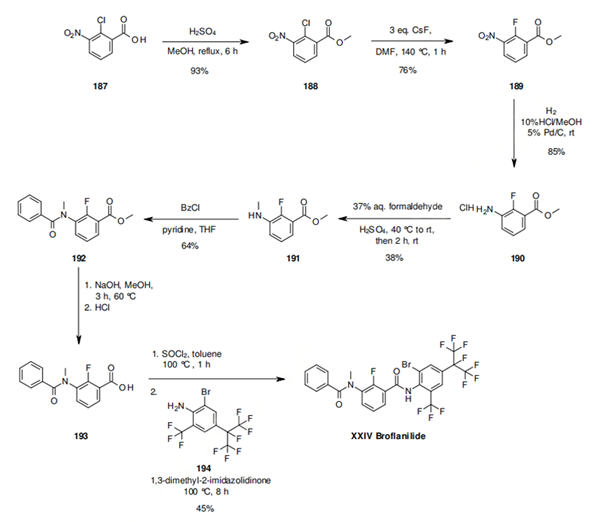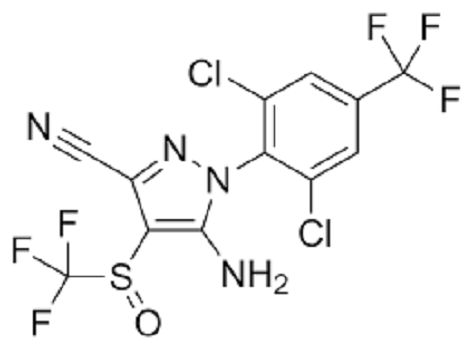Pesticides refer to the kind of chemical reagents used in agriculture for protection crops from disease, insects, rodents and regulating plant growth and killing weed. In addition for being applied to the agriculture, it can also be used in health and epidemic prevention, forestry, animal husbandry, environmental and health aspects. Based on the control object, it can be divided into insecticides, fungicides, miticides, nematicides, rodenticides, herbicides, defoliants and plant growth regulating agents. It has been developed of more than one thousand kinds of pesticides with most of them being made from chemical synthesis while a few of them belonging to biological pesticides. Pesticides used for controlling of harmful insects are called insecticides. Insecticides in early time are mainly biological insecticide (e.g. pyrethrum, nicotine, etc.) and inorganic compounds. Until the 1940s, the discovery and application of DDT and HCH had greatly promoted the rapid development of organic pesticides, leading to the emergence of three categories of organic pesticides including organochlorine, organophosphate and carbamate. In addition to being widely used in agriculture, insecticide can also be applied to home health and other fields. The application of insecticide is an effective method of controlling pests, but long-term use will cause resistance of insect, so that efficacy will decrease. In this case, we need to change to another kind of insecticide.
What is the Difference between Pyrethrin and Permethrin?
Both Pyrethrin and Permethrin are insecticides, in this article, we will discuss the difference in source, property, applications and safety between them.
Mar 13,2024 Chemical pesticides What is the synthesis of the nematicides Tioxazafen?
Tioxazafen, currently under development by Monsanto, is a compound which is claimed to be useable in seed treatment for the control of nematodes in corn and soy.
Mar 1,2024 Chemical pesticides What is the synthesis of the nematicide Fluensulfone?
Fluensulfone is a new nematicide introduced to the market by ADAMA, although originally discovered at Bayer CropScience.
Mar 1,2024 Chemical pesticides Afidopyropen: Synthesis and Introduction
Afidopyropen is a new, natural product derived insecticide.
Mar 1,2024 Chemical pesticides What is the synthesis of the insecticide Flometoquin?
Flometoquin has been presented by Nippon Kayaku as a new insecticide, which is active on thrips, white flies and some lepidoptora spp.
Feb 29,2024 Chemical pesticides What is the synthesis of the insecticide Fluhexafon?
Fluhexafon is a new insecticide from Sumitomo. It has reported uses on aphids and hoppers, but is also reported to have uses in animal health (activity on ectoparasites) and public health, with acti
Feb 29,2024 Chemical pesticides The introduction of Tetramethylthiuram Disulfide
Tetramethylthiuram disulfide (TMTD, thiram) is one of the most essential fungicides widely used in agriculture for seed treatment and crop protection.
Feb 29,2024 Chemical pesticides What is the synthesis of the insecticide Broflanilide?
Broflanilide is a new insecticide belonging to the meta-diamide class disclosed by Mitsui.
Feb 28,2024 Chemical pesticides The toxicity studies of fipronil
Fipronil is a member of a new class of insecticides called phenylpyrazoles.
Feb 28,2024 Chemical pesticides Synthetic route to the insecticide Cyclaniliprole
One convergent route explored by ISK for the synthesis of cyclaniliprole involves the coupling of anthranilic acid 161 and pyrazole carboxylic acid 165.
Feb 26,2024 Chemical pesticides 












